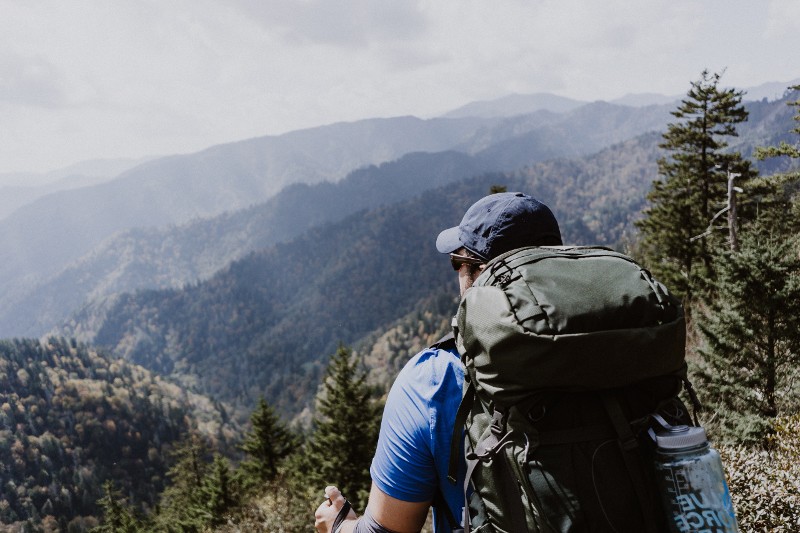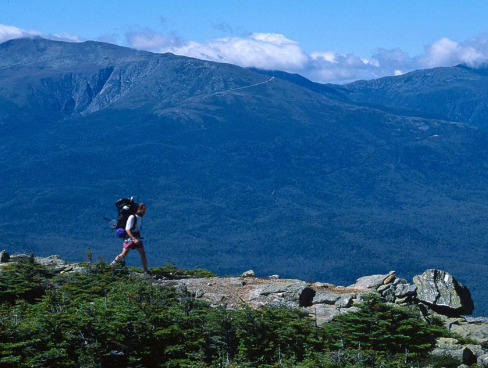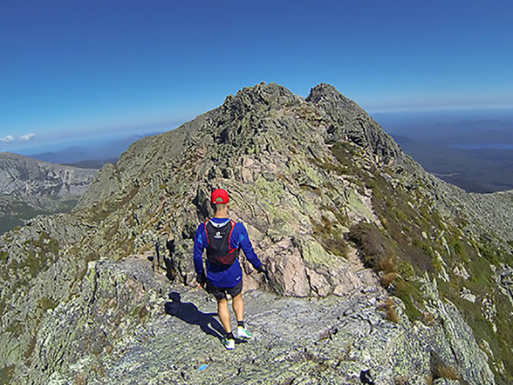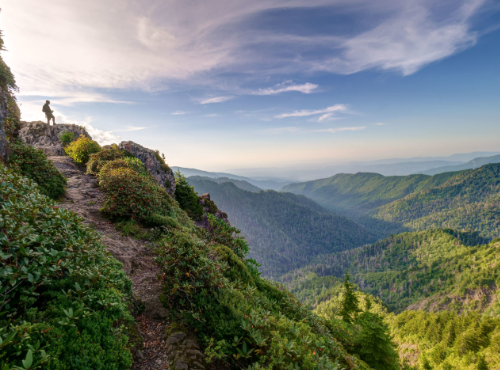Fear of heights
Appalachian Trail
Fear of heights Appalachian Trail

Do you suffer from fear of heights Appalachian Trail but still really want to visit?
The Appalachian Trail is a stunning hiking destination that spans over 2,000 miles, crossing through 14 states in the eastern United States.
It is known for its beautiful scenery, challenging terrain, and abundant wildlife. But for some, the fear of heights can make the experience less enjoyable.
If you suffer from acrophobia, or the fear of heights, hiking the Appalachian Trail can be intimidating.
However, it is possible to overcome your fear and enjoy the adventure. In this article, we will provide tips and tricks to help you conquer your fear of heights on the Appalachian Trail.
What is a Fear of Heights?
A fear of heights is an anxiety disorder characterized by an intense fear of heights, also known as acrophobia.
If you have a fear of heights, you may experience symptoms such as:
- dizziness.
- sweating.
- trembling.
- heart palpitations.
- or even panic attacks.
The Appalachian Trail and Fear of Heights
 Image: outsideonline.com
Image: outsideonline.comThe Appalachian Trail, also known as the AT, is a 2,200-mile-long hiking trail that stretches from Georgia to Maine in the eastern United States.
It is a popular destination for hikers and backpackers, who come from all over the world to experience the stunning natural beauty of the Appalachian Mountains.
However, for some hikers, the AT can also be a source of anxiety, particularly for those who have a fear of heights.
Fear of heights, or acrophobia, is a common phobia that affects many people. It is characterized by an intense fear or anxiety when in high places, such as on top of a tall building, a cliff, or a mountain.
For hikers with a fear of heights, the AT can present a real challenge, as it includes several sections that require climbing steep inclines or walking along narrow ridges with sheer drop-offs on either side.
 Image: hikingproject.com
Image: hikingproject.comOne of the most famous sections of the AT that can be particularly daunting for hikers with a fear of heights is the Knife's Edge in Maine.
The Knife's Edge is a narrow ridge that runs along the top of a mountain, with steep drops on either side.
Hikers must carefully navigate this section, often using their hands and feet to scramble over rocks and boulders, while trying not to look down.
Another section of the AT that can be challenging for hikers with a fear of heights is the infamous "Ladder Trail" in New Hampshire.
This section features a series of metal rungs and ladders that hikers must climb in order to reach the summit of Mount Katahdin.
For some hikers, the thought of climbing up a ladder that is bolted to the side of a cliff can be overwhelming.
So, what can hikers with a fear of heights do to overcome their anxiety and enjoy the beauty of the AT?
Below we will provide tips and tricks to help you conquer your fear of heights on the Appalachian Trail.
Fear of heights Appalachian trail tips
I have a few tips for you if you suffer from fear of heights but still want to visit the Appalachian trail.
Tip 1. Breathing
Pay attention to your breathing. When you start feeling anxious, you tend to breathe through your mouth and take quick, shallow breaths.
This actually increases your feelings of anxiety.
Try to avoid both of these behaviors and breathe through your nose instead.
Breathe in and out slowly, with the exhale being longer than the inhale.
Tip 2. Avoid excessive use of alcohol and caffeine.
Alcohol and caffeine can increase anxiety levels and reduce the ability to control anxiety.
Tip 3. Overcome your fear of heights
It is now possible to completely overcome your Appalachian Trail fear of heights.
With the latest methods, you can quickly and easily solve your fear of heights yourself.
Master Coach Jan Heering clearly explains how you can easily and quickly overcome your fear on your own.
Everyone can apply this simple method.
Do the exercises, and you will soon be free from your fear of heights!
Coming Soon!
Fear of heights and the Appalachian trail

Acrophobia can be a challenge when visiting the Appalachian Trail.
However, it does not necessarily mean that you cannot experience this magnificent location.
Applying the above tips, lets you keep your fear under control, or even eliminate it completely.
This will enable you to enjoy the breathtaking view of the Appalachian Trial, just like everyone else!
FAQ
How rough is the Appalachian Trail?
The Appalachian Trail is a long-distance hiking trail that spans over 2,200 miles from Georgia to Maine in the eastern United States.
The trail is known for its rugged terrain and challenging elevations, but the level of difficulty can vary depending on the section of the trail and the hiker's experience and fitness level.
Some sections of the trail can be very rough, with steep climbs, rocky terrain, and uneven surfaces that require careful footing and good balance.
Other sections may be smoother and easier to hike, with gentler inclines and more level terrain.
Overall, the Appalachian Trail is considered a challenging hiking trail that requires physical endurance, mental stamina, and adequate preparation.
Hikers should be prepared to encounter a wide range of terrain and weather conditions, and should have the necessary gear and supplies to stay safe and comfortable on the trail.
What is the most treacherous part of the Appalachian Trail?
The Appalachian Trail is a 2,200-mile-long trail that runs through 14 states in the eastern United States.
It has many challenging and treacherous sections, but opinions may vary on which part is the most dangerous.
Here are some sections of the Appalachian Trail that hikers consider to be particularly treacherous:
- Mahoosuc Notch in Maine: This section of the trail is a mile-long boulder field that requires hikers to climb over, under, and around massive rocks. The terrain is extremely challenging, and the trail is often wet and slippery.
- The White Mountains in New Hampshire: The trail through the White Mountains includes steep climbs, exposed ledges, and unpredictable weather. The rocky terrain can be treacherous, especially in wet conditions.
- The Smoky Mountains in Tennessee and North Carolina: The trail through the Smoky Mountains includes steep climbs, rocky terrain, and unpredictable weather. Hikers may also encounter black bears in this area.
- The Roan Highlands in North Carolina and Tennessee: The trail through the Roan Highlands includes steep climbs, exposed ridges, and unpredictable weather. Hikers must also be prepared for high winds and sudden temperature changes.
It's important for hikers to be well-prepared and equipped for any section of the Appalachian Trail they plan to hike, and to have the skills and experience necessary to navigate challenging terrain and weather conditions.
Can you hike if you have fear of heights?
Yes, you can still hike even if you have a fear of heights. However, it may require some extra effort and coping strategies to manage your fear and stay safe on the trail.
One option to help overcome your fear of heights is Emotional Freedom Technique (EFT), also known as tapping.
EFT is a self-help technique that involves tapping on specific acupressure points on the body while focusing on the fear or anxiety.
This technique has been shown to be effective in reducing anxiety and phobias, including a fear of heights.
In addition to EFT, there are other strategies you can use to manage your fear of heights while hiking.
These include taking breaks, focusing on your breathing, using positive self-talk, and staying mindful of your surroundings.
Remember, it's important to take your fear seriously and to never push yourself beyond your comfort level.
With the right coping strategies and support, you can still enjoy hiking and outdoor activities even with a fear of heights.
Entire contents copyright © Morpheus Instituut. All rights reserved.
Fear of heights Appalachian Trail
Brights Angel Trail afraid of heights
Morpheus Emotionele Bevrijding Home
Wikipedia Appalachian Trail
Wikipedia acrophobia
Dsclaimer Fear of heights Appalachian Trail
Author: Jan Heering
Jan Heering has been a coach and author for over 20 years. He specializes in rapidly resolving fears and stress. He has written over 30 books.

